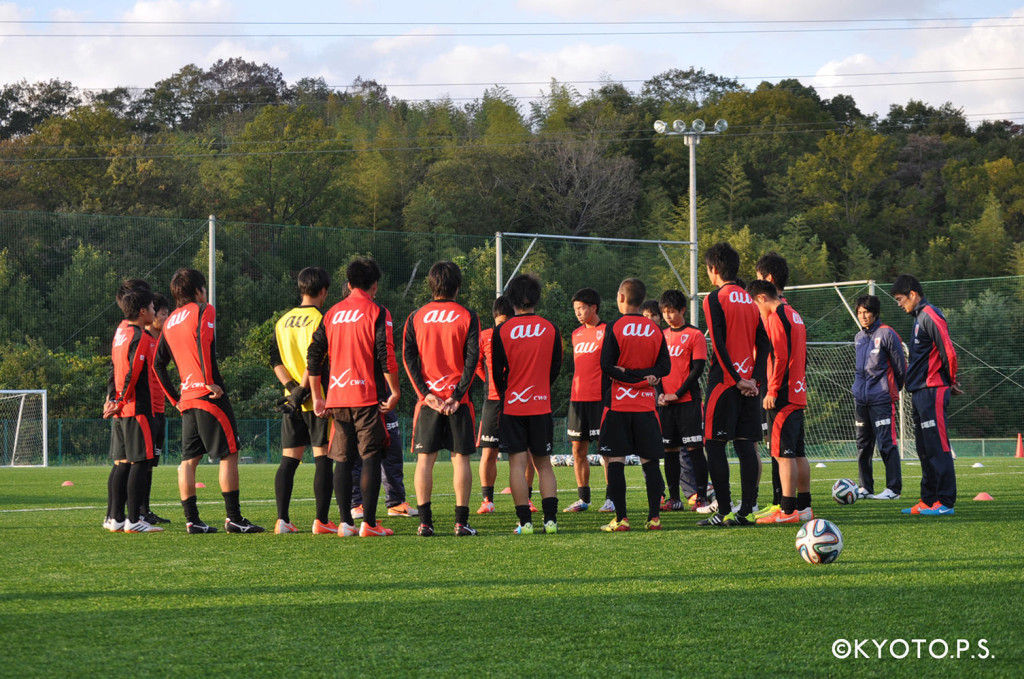What are the secrets to sustaining a business, producing consistent results, and then going beyond the norm to strongly establish yourself in the industry you are in for the long term future? How do create orders and sales, and connect with your highly valuable customers? In the second part of Footy Weekends interview with Kyoto Sanga FC’s president Hiroshi Imai, he reveals some of his secrets to these much pondered questions from the point of view of a business man in the world of football. He discusses the business aspect of the club further, giving us an insight into the community-mindedness of the club, and crucially, what the future holds for Sanga.
前回(11/22)掲載の記事に続いて次の質問では、プロのフットボールクラブの資産とも言えるファン、サポーター作りをクラブはどう取り組んでいるのか、という点についての考えを伺いました。
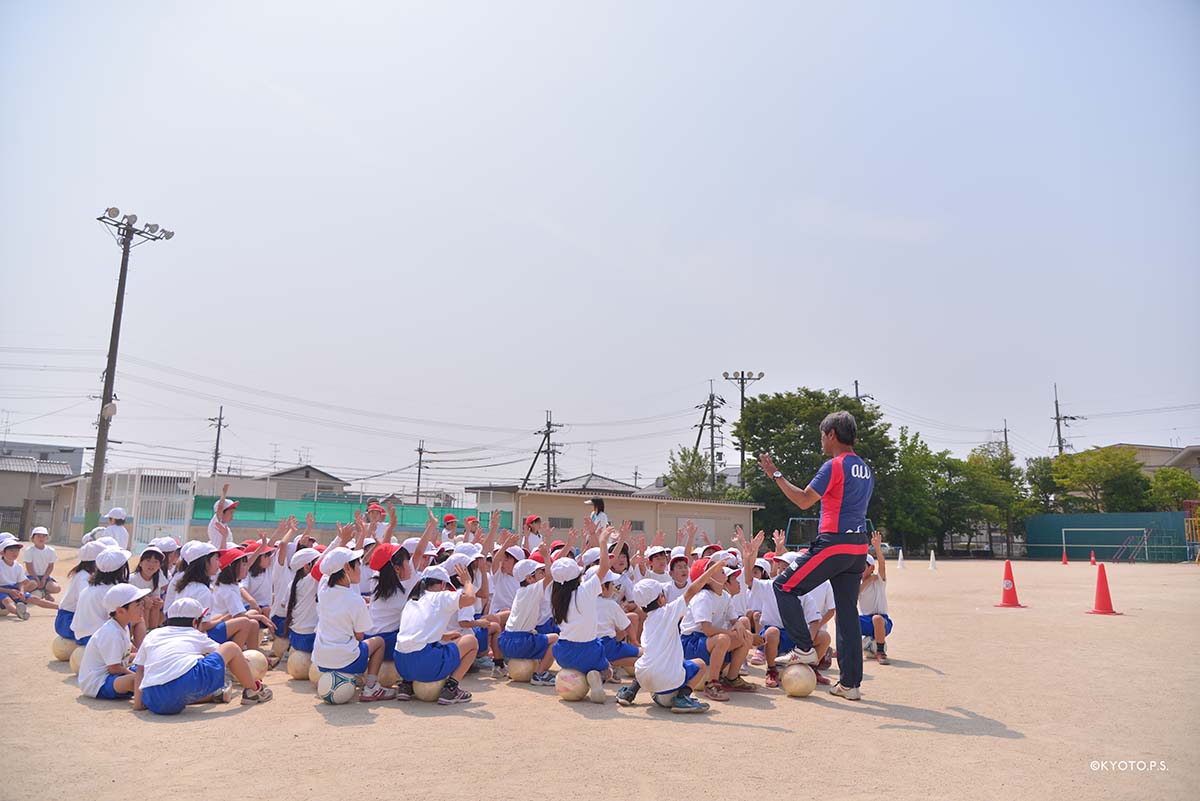
“Fans are born through closeness and a connection with the club.”
FW: What is the connection between the business side of the club and community centred activities that you carry out?
HI: The main work of the business side of the club is to create fans. One part of Sanga’s work in the community is visiting all the primary schools in the Kyoto area and enjoying football together with the students and teachers. We call this team of staff the ‘Sanga Community Squad’. But how do we create fans this way? You cannot simply make fans through TV and other media. You cannot even expect to increase the number of fans by having people come to the training ground and interacting with the players at the sidelines. The way to increase fans is simply to get them to come to watch a game live at the stadium, and let them experience the charm of the game and the team, for themselves. Getting people there is easier said then done though. So how do you get people who have never set foot inside the stadium to watch a game there, to come to the stadium to watch a live game? Well, you have to start with children, and the local people. Encouraging them to invite their friends and create the chance or reason for someone to go to the stadium for the first time. For this, we at Sanga take it upon ourselves to get out into the local community, and work incredibly hard and dedicate time to connecting with our fans out there and potential fans. Then, those people that we meet and make a connection with, that makes a chance for us to invite them to watch a live game. It is through this interaction with people in the community that fans are born. This work in the community however doesn’t come free to the club though, but we aren’t doing it as a way to find financing for the club, we do it to realise the philosophy of the club and to create fans of the future. To continue this kind of work, all that is necessary is effort by the club itself. By making the opportunity to be able to invite local children to the games, we can invite their families to come along too, and then next time offer them discounted tickets and so on. And then, you have hopefully created a repeater and a regular at the stadium.
Q3:クラブ経営と地域貢献活動の関連とは?
"ふれあいの中からしかファンは生まれない"
「クラブ経営の基本は、ファン作りですよね。サンガの地域貢献活動としては、教育委員会と一緒になり、京都府下の各小学校へ出向いていきサッカーを一緒に楽しむ「サンガつながり隊」というのをやっています。」
「で、どうファンを作るか?ということで言うと、広告をただテレビで流すといったことをやってももちろん人はファンにはなってくれません。練習場へ見学に来てくれたファンの方達と選手が交流をしてもこれでファンが増える訳ではありません。最終的には西京極で試合を生で観ていただき、そこでフットボールの魅力に気付いていただけた時にファンが増えます。しかしながら、スタジアムへ足を運んでいただくまでが難しい。フットボールの試合を生で観たことが無い方々にどうやってスタジアムへ来ていただけるか、そこはやはり、お子さんや近所の方、友人のお誘いがあるといったきっかけがあって初めて試合を観ていただけるようになります。そのためには、我々が自ら地域に出て行って汗をかいて緻密に交流をし、そこで出会った方々をホームゲームへご招待し観戦のきっかけを作る、その繰り返しです。ふれあいの中からファンが生まれるわけです。」
「しかし、この地域貢献活動というのは、経営面においてはコストがかかります。どこかからお金を頂いてやっているのではなく、クラブの理念の実現と将来のファン作りのためにやっているのですが、これを続けるためにもクラブ自体に体力が必要です。地域の生徒さん達を招待をさせていただいたきっかけで、そのご家族も一緒にスタジアムに来てもらったときには、次回も気軽に足を運んでもらえるようなお得なチケットをお渡しして、リピーターになっていただけるような取り組みを繰り返しています。」
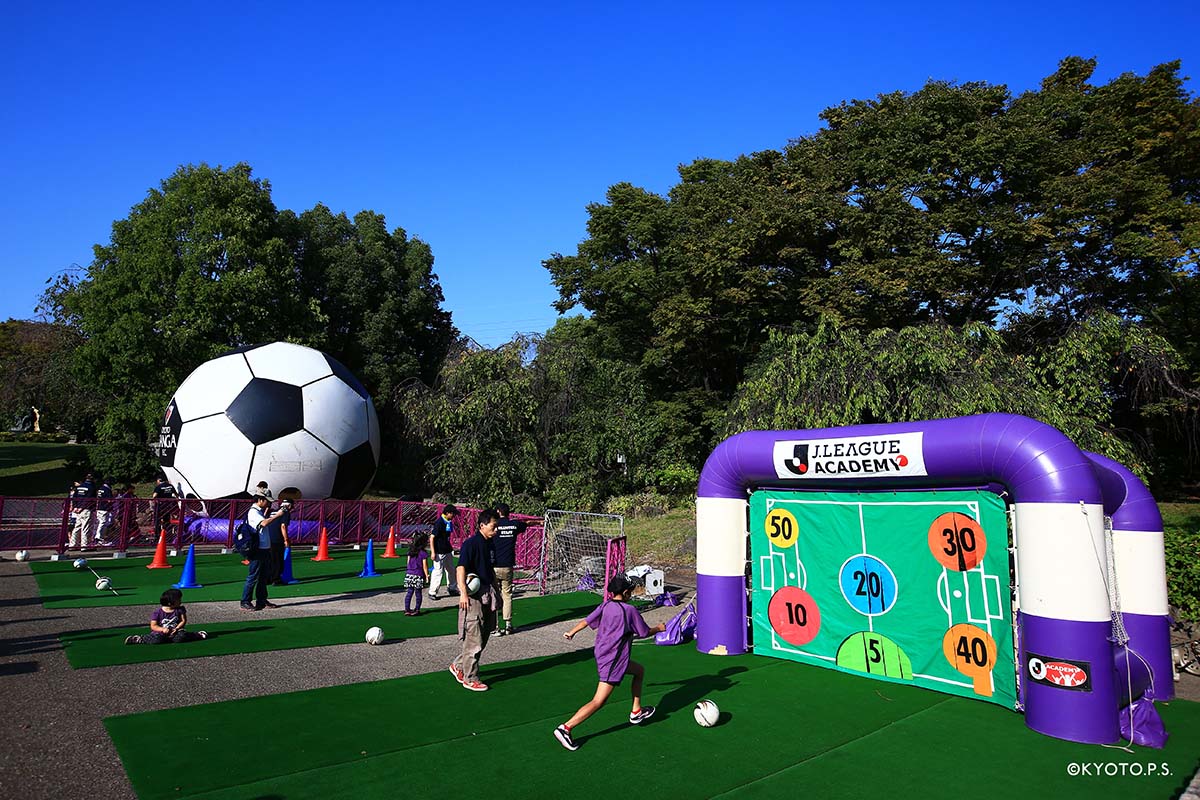
“To produce national team players from Sanga’s very own academy, national team players that you can see at our training ground.”
FW: What’s next for the club?
HI: We are aiming to be a strong training club. A centre of training excellence will be our great achievement, and the realisation of our efforts. Rather than get players that have been raised and enriched by training programs at other clubs from primary school to high school youth (under 18), we want to properly raise our own youth players ourselves and turn them into professional players. At the moment, we have a special course for primary school students from year 4 (9-10 years old) to year 6 (11-12 years old) called U-12 SP Course. So we already have special training programs in place for primary school children, and they can receive special coaching for their age. But there is too much focus, and limitations here at this stage. We want to give more chances to train more children who are aiming to be professional players. For example, for those year 4 students who failed to make the selection for the U-12 SP Course, there are times when those children fall down at this hurdle and are considered to not have what it takes, but actually turn out to be very talented. They are simply late developers. So from next year, in a bid to keep an eye our for and be alert to this overlooked talent, we are looking to change the system at the training academy. We want to give more chances to more people. We have approximately 600 to 700 children apply for the selection process into the U-12 SP Course, and about 500 of them don’t make it through. To write-off these children at this age is a huge waste of potential talent, and we simply have to work with them further and help them to improve and become the talent they could be. If that then means that our Junior Youth U-15 program is overflowing with players, we will simply just create another team. If you increase the Junior Youth U-15 team, we’ll have more players that will make it through to promotion to the Youth team (U-18) and we will have less need to recruit from outside. If you raise up players from the U-15 level to the U-18 level, but end up recruiting players externally, for a club aiming to be a centre of excellence for training and have a strong academy, relying on external recruitment is like putting the cart before the horse, it makes no sense at all.
Q4:今後の目標は?
"練習場で会える、サンガ育成組織出身の代表選手輩出へ"
「育成型クラブを目指しているので、そこの実績を確実にしていきたい。育成組織をもっとしっかりしていき、小学生年代から充実をさせて高校生年代のユース(U-18)では他から選手を獲得するのではなく、ちゃんと下から育ってきた子を選手にしていきたいと考えています。」
「現在は、小学校4年生から6年生がスペシャルコース(U-12 SPコース)として小学生のスクールの中でも特別な指導を受けていますが、そこを絞り過ぎています。もっとたくさんのプロを目指すような子どもたちを我々で指導していきたい。例えば、小学校4年生の時にセレクションを受験し不合格になっても、たまたまその時ダメで後に上手になる子はたくさんいます。そうした才能を見逃さないよう、そのあたりの仕組みを来年から変えていこうと思っています。そして中学生年代のジュニアユース(U-15)がもし溢れたということであれば、もう1チームを作ればいいと思っています。」「ジュニアユース(U-15)が広がると、ユース(U-18)では外部から獲らず、ジュニアユース(U-15)から昇格するようにする。ジュニアユース(U-15)で育てていても、ユース(U-18)の段階で他から選手を獲得していては育成型クラブとして本末転倒じゃないですか。」
「スペシャルコース(U-12 SPコース)のセレクションでは、600から700名が参加をして、そこから500名くらいを落としてしまう。それはやはりもったいない。そこの層を充実させてあげないといけないですね。」
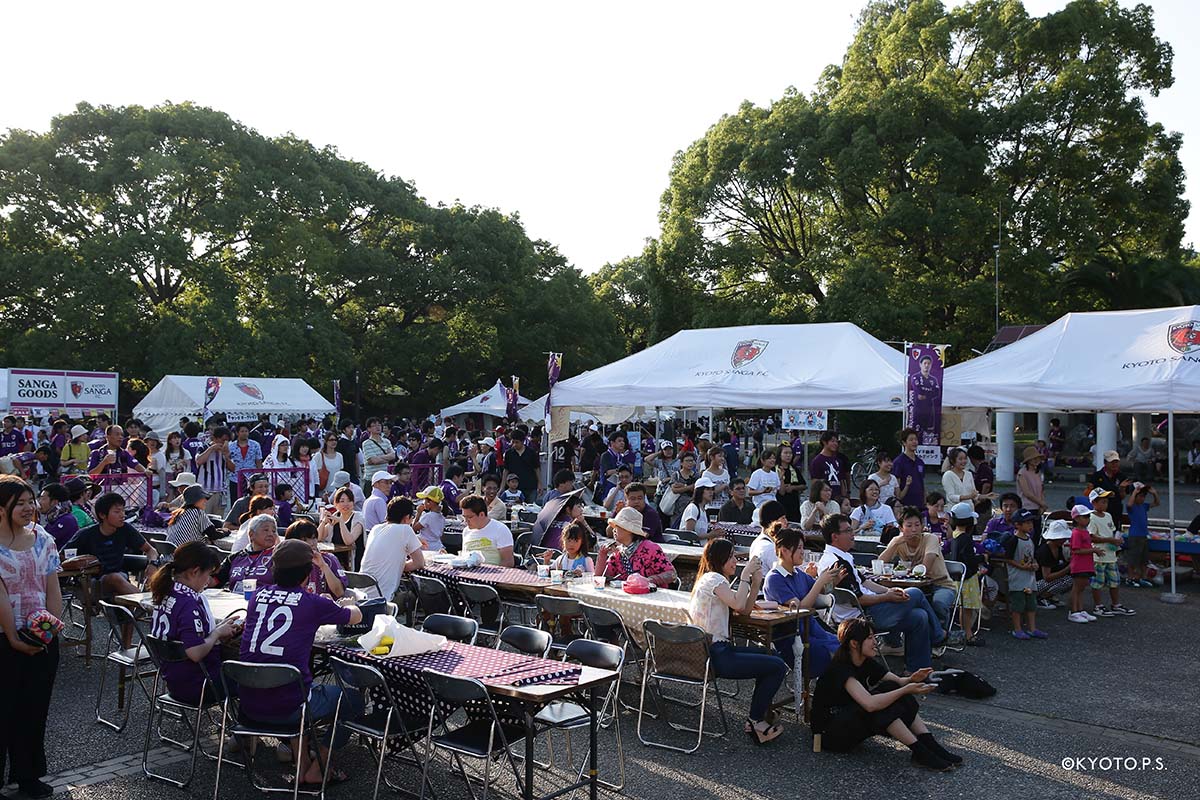
As a club, we work on a 3 year plan system, so each year we have a rolling plan in place. We came ever so close during Oki’s 3 years as manager (2011- 2014), but again we found some areas that were lacking and needed to be worked on. From next year we will be focusing hard on making a new and improved team, 3 years from now, 3 years on from next year, in this rolling plan system, one thing that we have concretely got our sights set on is that in the 2016 Rio Olympics, there will be at the very least 1 or 2 Sanga produced players on the team. To achieve this, we need to make these potential candidate players regulars on the pitch. We need to give them game time. If we don’t use these players in games, it is less likely that they will receive the call to represent their country. So to continue to produce players that do make the national grade, we have to make those players regulars on the pitch in our games, and in turn that can only make Sanga a stronger and dominating team in the league. We have had national team players come and play for Sanga, but from now on we want players that have been raised by Sanga’s training centre to be picked for the national team, and be regulars seen at our training ground. Our biggest goal currently is for national team players, players that have worked their way up our training system, to play at our new stadium.
「クラブとしては、3年周期の計画に対し、毎年ローリングプランを行っています。大木前監督の3年間というのは実に惜しかったですが、計画作りの中でまだ足りないものがありました。来年は改めてしっかりとしたチーム作りになりますが、今年から3年後、来年から3年後といった形でローリングプランを行っていく中で、ひとつの具体的な目標としては、2016年のリオ・オリンピックに、サンガの育成から上がってきた選手を1人から2人は絶対に輩出したい。つまり、その意味は、育成組織出身の選手を試合で起用し続けないと彼らにチャンスは訪れないということですよね。」
「代表チームにうちの選手が選ばれ続け、そのチームでレギュラーとして起用されることで、サンガも強くなるはずです。
代表選手がサンガに来て活躍するというケースはありますが、これからはサンガで育った選手が代表に選ばれ、そういう選手が練習場で来ていただければ会える、というチームにしたい。
代表でもプレイするサンガの育成組織出身の選手達が、新しいスタジアムでプレイする姿を観たい。これが当面の目標です。」

FW: The Japanese version of the football entertainment industry as created by the J League thus far, still remains to be different to the style that you find in say England, where you’ll find football grounds with their club houses that are the hub of the local community. After having reached 20 years since establishing the J League, Japan is at a point where it needs to focus more on building up the industry more from the football community and the roots of the industry. By connecting with the local people of the community step-by-step, and producing local town heroes for the crowds to go and watch and support, it is this that Mr Imai believes will bring people to the stadium.
Making Kyoto Sanga FC become the people of Kyoto’s pride and joy and to help to grow a blossoming football culture in Kyoto, it is this mission that Mr Imai is shouldering, whilst providing consistent achievements in an ever increasing harsh business environment. In the next 20 years from now, what kind of club will Kyoto Sanga FC actually become? This is the type of football adventure and challenge that surely many fans out there want to be part of for many years to come.
10th October 2014
Footy weekends Kyoto&Brighton
From Footy weekends
どんな町にもフットボールグラウンドとコミュニティセンター(+パブ)があり、それらが地域の生活に根付いているイギリスとは違い、Jリーグクラブが出来たことで、フットボールコミュニティ作りから取り組まないといけない日本では、地域に暮らす人々との関係作りを実に地道に行いながら、育成面で我が町で生まれたヒーローを生み出していかないと、スタジアムに足を運んでもらうきっかけすら生まれません。しかしながら、リーグでの成績の安定を考えると、クラブとしては補強と育成のバランスを図る必要もあり、強いチームであることを願うフットボールファンの方々にとってはもどかしく感じる部分かもしれません。
今井社長の言葉には、京都府民の公共財ともなりつつある京都サンガF.C.を、厳しい環境の中で経営を安定させることの使命を背負いながら、この京都で、成熟したフットボールカルチャーに育て、地域に定着させることへの挑戦の意志を感じました。
これからの20年後、京都サンガF.C.がどんなクラブとなっているのか?このフットボールアドベンチャーを末永く見守っていきたいと思います。
10th October 2014
Footy weekends Kyoto&Brighton
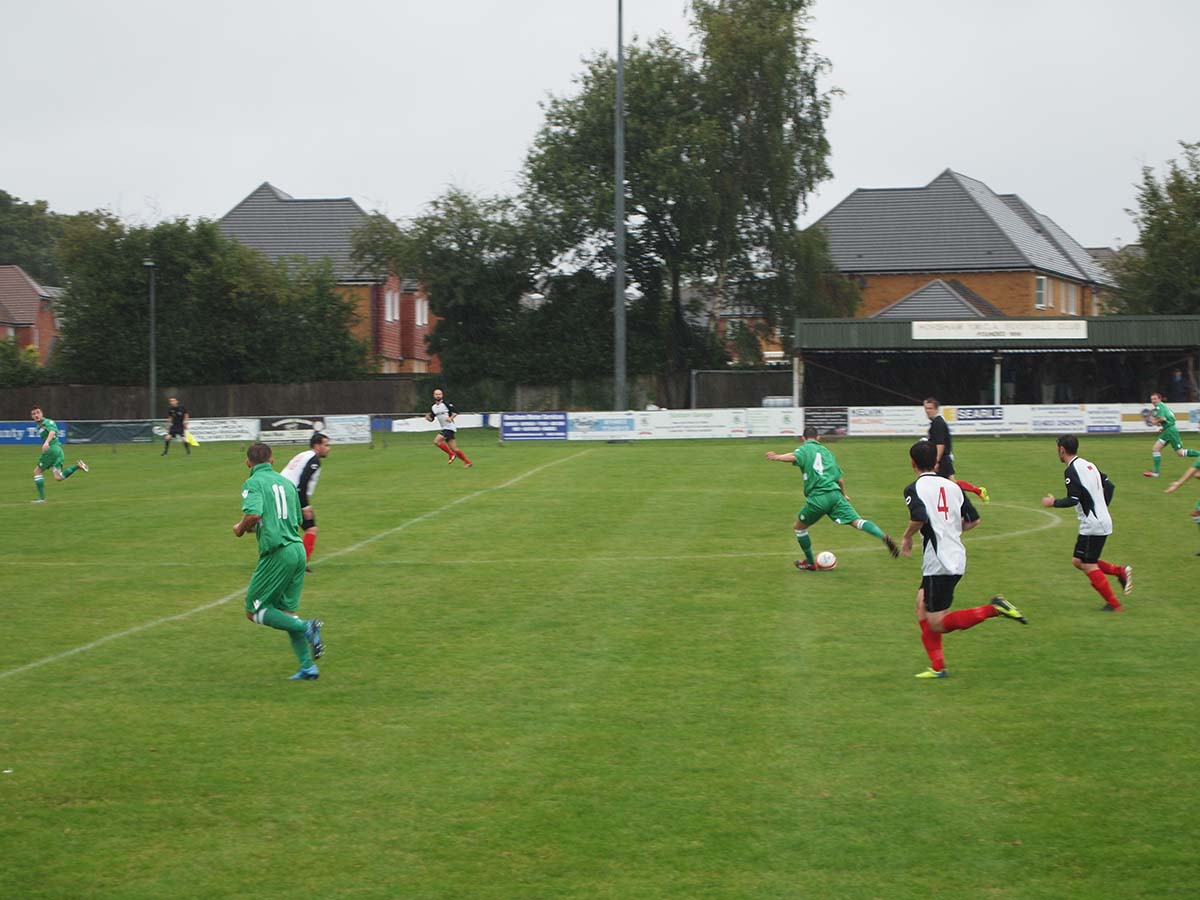
A special Interview
Hiroshi IMAI Kyoto SANGA F.C. President
My message to Sanga fans (To the episode 1)
スペシャルインタビュー 京都サンガF.C.社長 今井浩志氏(株式会社 京都パープルサンガ 代表取締役)
「京都サンガF.C.のファンの皆様に伝えたいこと」その1へ
http://footyweekends-jp.co.uk/watch/474

